Materials for a Lighter Future
Milan Design Week may be behind us now, but the impact of the exhibitions, talks, events and performances can still be felt. Indeed, having had the show back to full strength once again highlights the magnitude of the reverberations it creates within the world of design, and beyond. A series of concurrent themes were at play this year, each looking to challenge the ways in which design can respond to the bigger issues we are faced with. So it’s no surprise that many events looked to champion materials and manufacturing processes that encapsulate more responsible, sustainable and circular methodologies.
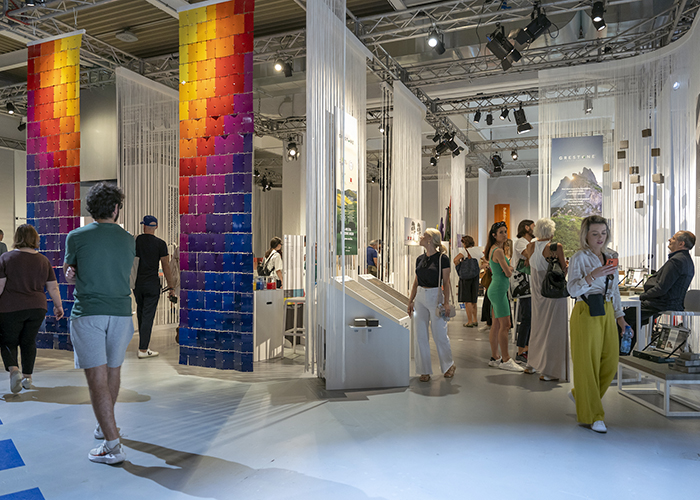
One such exhibition was Urban Matter(s), an event organised by Italian material specialists Materially. The premise was simple and direct; to push the discussion about our impact on the environment and our health further, and to provide some real answers to some of the key issues, notably climate change, air quality and the overproduction of waste. And when you dig a little deeper it’s no wonder that it was the team at Materially who took on such a brief. Materially primarily acts as a consultancy to other brands who are keen to develop sustainable innovation and start the process with materials themselves. As such, the team is constantly researching and scouting out materials that fit a specific design brief whilst reducing their environmental impact. Their client base is broad, including brands such as Adidas, Arpa, Gucci and Panasonic, although they’ve also used their insight to support a number of start-ups too.
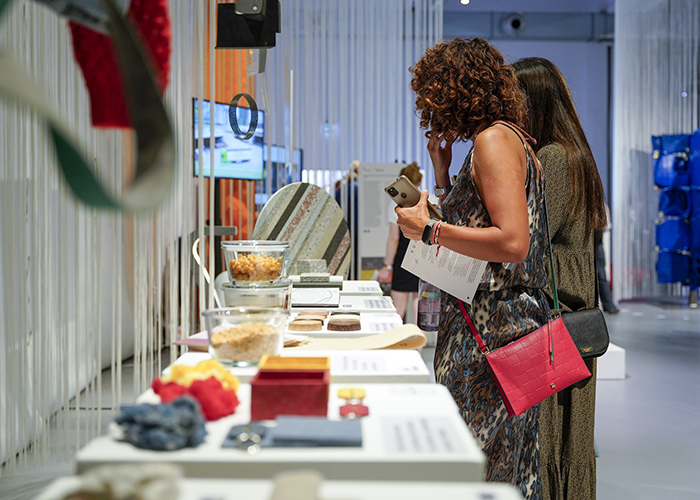
The exhibition was carefully curated around a series of key ways of thinking, as the Materially team explains:
“Founding principles of this concept include the responsible use of natural resources, the elimination of pollutants that have already been released into the environment, the overall lightening of materials and components, and the transformation of industrial waste into upcycled valuable products.”
In order to encompass so much detail and new ways of thinking, 4 main themes were introduced within the structure. Carbon Revolution gave attention to the stemming of and breaking down of carbon emissions and the closely linked Breathing Quality focused on materials that protect, purify and filter harmful elements from our air. Resourceful Waste covered many of the themes you might expect, notably limiting the overproduction of waste as well as the transformation of materials found in various waste streams. The final component, City Skin, proposed ways in which we might change, redefine and redress our urban settlements using active surfaces that interact with light and sound, amongst other things.
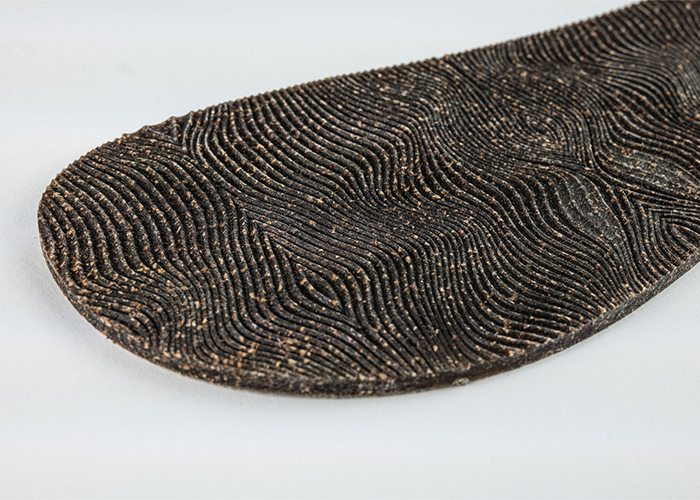
In terms of brands who are looking to target the over production of waste, there were a number of interesting and hopeful new material solutions. A prime example of a manufacturer attempting to work in a more virtuous way is Mixcycling, a new start-up from Vicenza. What’s more, they are also pioneers of a new approach to sustainbility, coining the phrase, Triangular Economy. The process involves taking a client partner’s production scraps that are then blended and transformed into new materials, which can then be used for packaging of the initial scrap-generating products. The scraps in question are organic and are mixed with polymer bases that can be biobased, recycled, virgin, biodegradable, or biodegradable and compostable. That said, Mixcyling don’t just see themselves as material manufacturers. The overall effect of the triangular system reduces supply chain ineffiencies and creates a genuine partnership between them and the initial material manufacturer, with Mixcyling guiding them through each new manufacturing step until a new ecosystem is born.
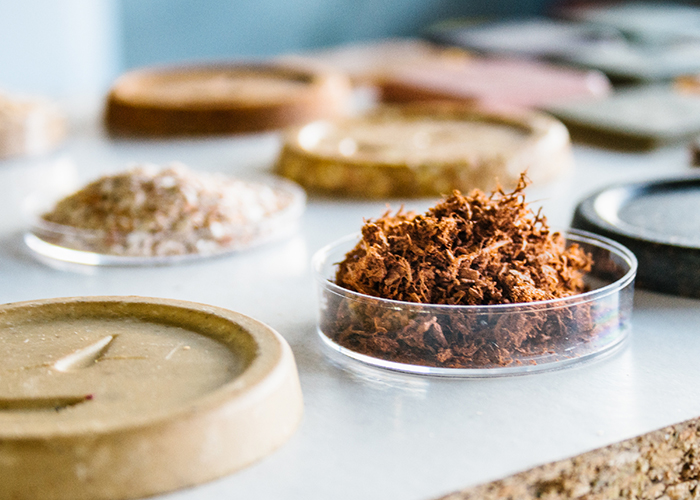
French company Arriosa are also interested in bio-composite materials but they’ve turned their attention directly to the binders that hold them together. The product, ECOPIN, has been created by designer Camille Suarez and is a 100% biosourced resin made from renewable materials that is resistant to water and UV light. Although alongside the resin they also make their own composite materials with the introduction of agroforestry by-products. Indeed, much like Mixcyling, the supply chain is kept to an absolute minimum meaning all the organic materials used are locally sourced to one and other and have clear traceability. What’s more, the materials themselves still carry many of the characteristics that have made polymers so popular, not least that they can be thermoformed and injection moulded. But to add to this, ECOPIN is also reusable without losing any of those properties, making it an ideal closed-loop material.

Another brand showcasing bio-based resin products was NaturLoop who create Cocoboard. As the name suggests, coconut husk fibres, which are another form of agricultural waste, are used along with the natural adhesives to create biocomposite panels. The use of natural adhesives ensures a low environmental footprint, and non-toxic emissions and the panels are fully biodegradable, as well as being moisture resistant. Whilst it may not initially seem like “saving” organic waste materials in this way has much of an impact, it’s worth noting that not only is there said to be 21 tonnes of unused coconut husks sitting in farms globally, the farmers themselves are also some of the lowest paid in the agricultural industry worldwide. NaturLoop work directly with farmers, helping them to create collection and transportation of the coir materials as well as ensuring that they are properly paid for the work they do.
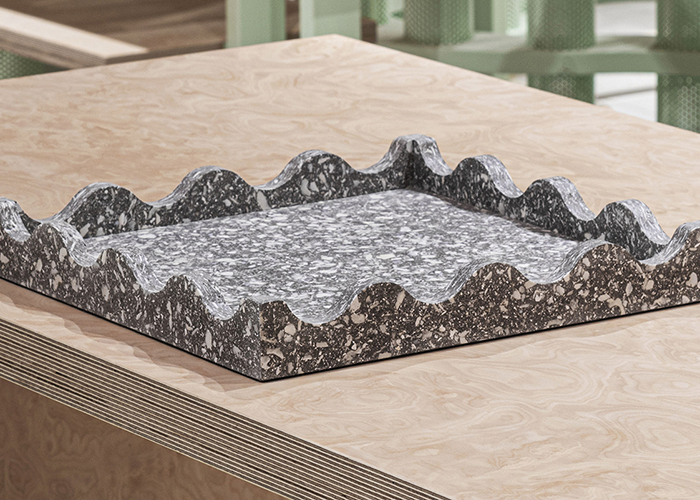
A more established company with recycling running through its very core is Italian brand Gees Recycling. They were the first in Europe to invest in the technology to transform fibre reinforced plastic composites and rigid foam insulation, some 60 years ago. The very involved process means that there still aren’t many others doing the same now, but the work Gees does means that huge volumes of such waste materials don’t continue to go into landfill where they’d very slowly breakdown over hundreds of years. Their Recomplax recycled panels are comprised of rigid foam particles and fiber-reinforced thermosets obtained through an innovative re-agglomeration process with a minimum percentage of virgin binders used in the process and can used for construction and furniture.
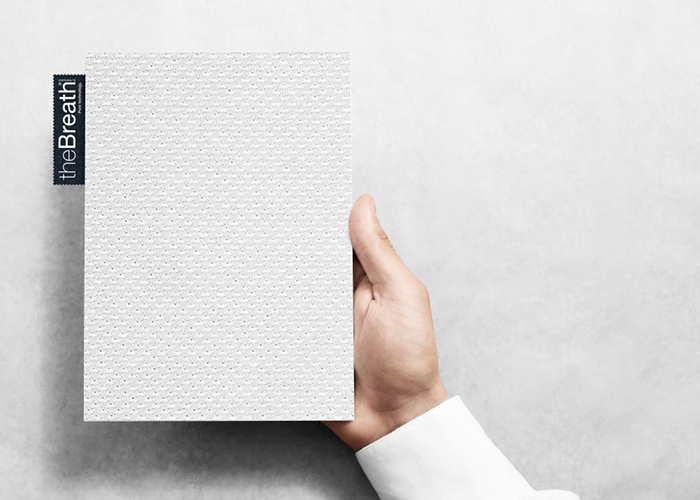
Italian company Anemotech pride themselves on producing innovative solutions that help the environment and Breath is certainly one of the products that fitted neatly into the exhibitions Breathing Quality section. The fabric is billed as “an ally against pollution” and does so by absorbing and breaking up pollutant particles and reintroducing purified air. This is made possible by a multi-layer of fabrics that passively go about their cleaning job. An exterior mesh layer allows air to flow through to the core layer composed of carbon, which contains a nanomolecule surface that does all the hard work, including breaking up bad odours. Its also a further positive sign that such exhibitions stick to the principles they are conveying when it comes to their own waste. As well as using Breath to create display spaces within the hall, the team also ensured that all other elements used to create the exhibition were guaranteed a permanent new home and post-show usage.
Whilst a drop in the ocean, shows like these offer a glimmer of hope that we may yet create a human and community-friendly future.




